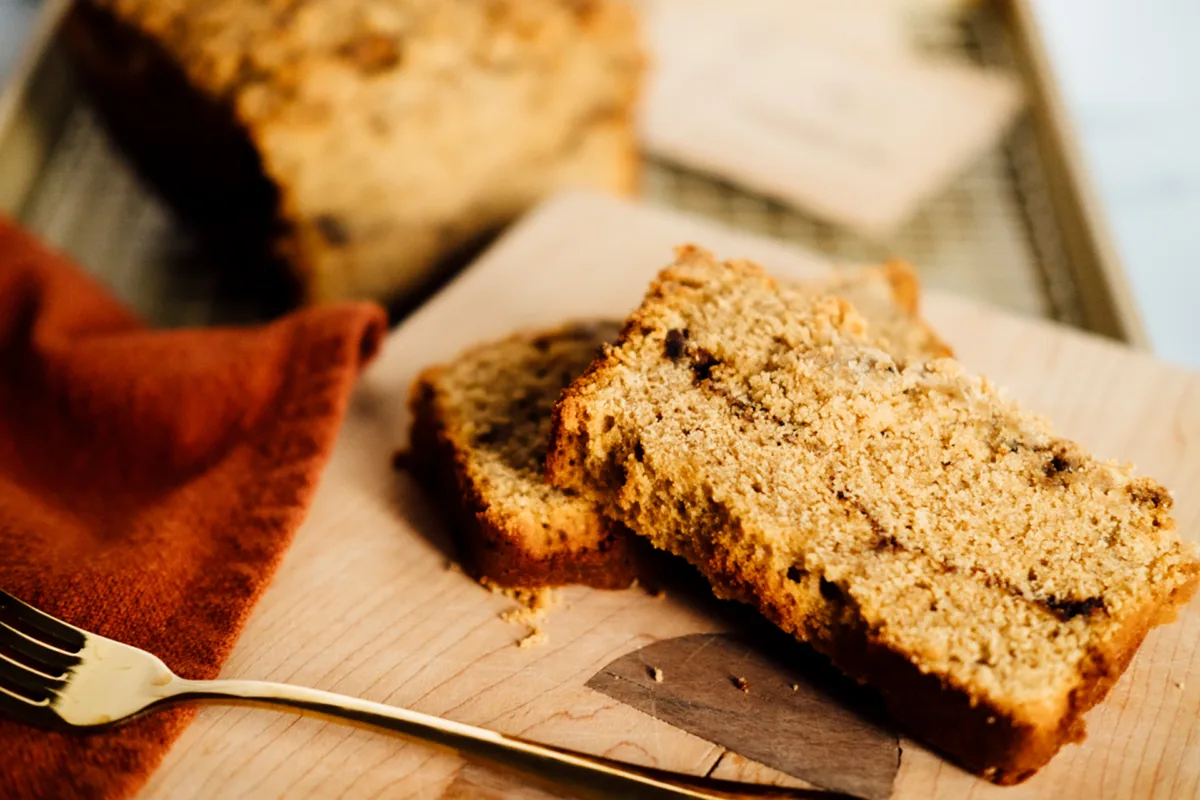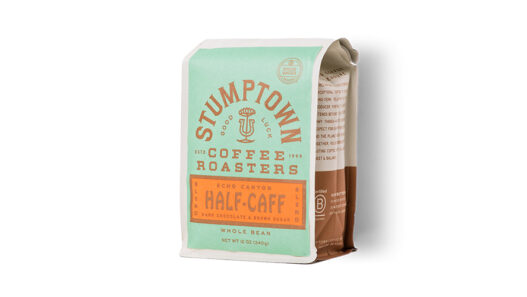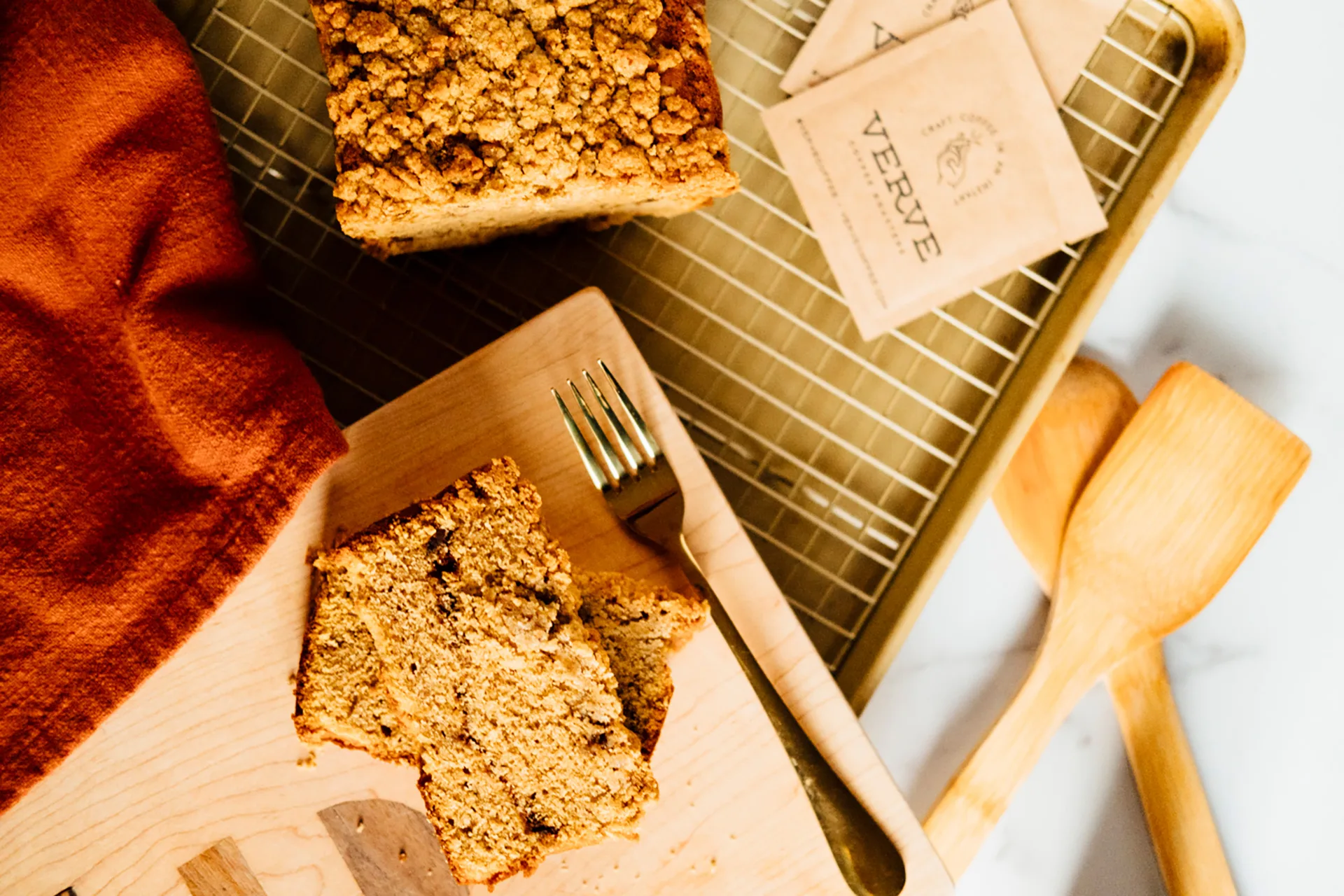I used to shy away from coffee-flavored goods, even when it comes to baking with coffee. I’ve been burned too many times to count by a “coffee-flavored” anything: it never tastes like the coffee I drink in the morning, but rather, a thin imitation of coffee flavoring. They tend to be one-noted in bitterness and discard all the complexity of coffee, even for beginners. As I learned for my coffee snacks article, coffee flavoring doesn’t have to include coffee at all. 15 to 30 aroma chemicals are all that’s needed to reproduce that “coffee” flavor.
Surely there’s a better way to incorporate the nuances we all love in the drink into baked goods. And so I baked through three different coffee-flavored recipes to try out the many ways you can insert coffee—real coffee—for a delicious coffee baked treat.
I’m an occasional baker, avid Great British Bakeoff binge-watcher, and pastry-eating connoisseur, so obviously, I’m qualified to evaluate recipes. I’m kidding, this was all for fun and done as a challenge to see if I could change my mind about coffee-flavored baked goods. This should not be considered a catch-all for everything you can do with coffee in baking and cooking. But I did consult an expert.
For baking science and guidance, I turned to Janice Lawandi, a PhD chemist-turned-baker who regularly publishes science-baked recipes on her site The Bake School. She caught my eye because she uses more than just instant coffee granules in her many coffee-incorporated recipes.

There are quite a few ways for coffee to appear in a recipe: espresso powder, instant coffee (specialty and non-specialty, like Folger’s), ground coffee, brewed coffee, and cold brew concentrates. It can be used as a standalone ingredient, replace another, or infused.
I asked Lawandi how she determines which one to use in a given recipe. She told me she asks herself four questions at the top of any baking task:
1) Does the recipe that I’m modifying have any liquid in it?
2) Does the recipe have a step where a liquid can be infused with a flavorful ingredient?
3) Is there somewhere in the recipe where I can replace a liquid with brewed espresso or coffee?
4) Will the texture of the ground beans enhance or add something interesting to the recipe and the final baked good?
“Creativity in baking comes from analyzing the base recipes and their ingredients, and also understanding what makes and breaks a recipe so you can tweak and modify the components in a smart way,” she says.

To incorporate coffee into a dry ingredient mixture, instant coffee granules, espresso powder, or ground coffee are the way to go. Espresso powder, according to King Arthur Baking, who sells their own powder, “is much more concentrated than instant coffee, which means you only need a teaspoon or so in your chocolate recipe to do the trick.” At the teaspoon amount, you will only enhance the chocolate flavor—no coffee flavor will come through. And despite its name, it is not meant to create an instant espresso for you to imbibe. Because espresso powder is so finely ground and concentrated, it’s great for drier doughs like cookies and cakes, where you want a coffee flavor but you don’t want to mess with the texture. “Your recipe probably can’t handle more liquid than what is listed so you may be adding the powder to your recipe in the same way you add a dry ingredient,” explains Lawandi.
Fellow Sprudge contributor Anna Brones has made Chemex gingerbread cookies and coffee sugar cookies that use both brewed and ground coffee in the cookie and frosting parts. I am not that talented in cutting out cookies, nor in icing them, so I opted for something more basic (circular): tiramisu cookies.

It would be difficult to write about baking with coffee without including one of its best-known representatives: tiramisu. I love a good tiramisu, and even went down a rabbit hole for non-alcoholic substitutions, but it felt too daunting for me (if you’re more advanced than me, try out Lyre’s recipe, which uses their non-alcoholic spirits).
Surprisingly, the original recipe does not include alcohol. The Tiramisù World Cup is held every year for amateur chefs in Treviso and contains two categories: original and creative. In the original category, all six ingredients (ladyfingers, mascarpone cheese, eggs, coffee, cocoa powder, and white sugar) are provided and must be used. Creating ingredient waste will dock off points. As a dessert, it may have originated in the mid-1900s (or 1800s)—the history is hotly contested—but its resulting popularity cannot be argued.
Instead of trying out tiramisu, I made tiramisu cookies, which borrows the flavors of the dessert and discards the heavy richness of it. The recipe calls for espresso powder or instant coffee in the cookie and coffee liquor in the frosting. “In a cookie recipe, I’d say instant coffee is the dry equivalent of adding a flavorful extract,” says Lawandi. “The trouble with some commercial instant coffees is that they may lack the complexity and uniqueness of specialty coffees.”
For these cookies, I opted to use a specialty instant in a paste for the cookie dough and then brewed the rest as a concentrate (mixed half of the instant coffee manufacturer’s suggested amount of hot water). Many specialty instant coffees go through a freeze-drying process that preserves the original complex flavors, which is something you don’t want to hide. Lawandi suggests using specialty instant as part of a concentrated soaking liquid like in trifles and cakes, or as a powder coating like for truffles.
The tiramisu cookies were a hit with my tasters (friends): they’re quite thin but somehow retain a soft chewiness on the inside with a crisper exterior that proudly carries the coffee-mascarpone frosting.

The first time I tasted coffee cake, I was so disappointed by how it did not taste like coffee. It was more like a bread and meant to be paired with coffee—make that make sense. It turns out that if I lived in the US in the late 1800s, coffee would’ve been an ingredient and not just a side companion. “One cup made black coffee—the very best quality,” writes Marion Harland in her 1875 book “Breakfast, Luncheon and Tea.” “The flavor of this cake is peculiar, but to most palates very pleasant.”
Today’s coffee cake is a uniquely US-developed phenomenon and has many variations—fluffy to dense breads, a sweet strudel topping (sometimes), baked as a loaf or circular bundt—it goes on. Thanks to its rich German immigrant history, Cincinnati is a self-proclaimed coffee cake capital of the world. When Germans immigrated into the city, they brought with them a yeasted dough recipe and a coffee-time kaffeezeit tradition. As these cakes evolved, according to The Cincinnati Enquirer, “Bakeries expanded the definition of coffeecake, adding Danish-style dough, which is laminated, or repeatedly rolled and folded.” We’re now in a glorious age of coffee cake-ness.
I made Claire Saffitz’s “Coffee Coffee Cake” from her recipe book “Dessert Person.” Coffee is the star in every part: instant coffee granules appear in the richly concentrated ribbon running through the middle and in the crumb topping, and brewed coffee is part of the cake batter. Saffitz’s video recipe notes include a warning about not substituting espresso powder, because it’ll become bitter. To intensify the coffee flavor, she adds instant coffee granules to a cold brew concentrate. For the record, this is not a coffee cake to eat late at night if you’re sensitive to caffeine—my boyfriend, wide-eyed at 1:00am, confirmed this to me.

It would be a bit rude to interview someone and not try out one of their recipes, so I decided to bake Lawandi’s Turkish Coffee Cardamom Buns, a visually daunting twisted, swirled bun that calls for espresso powder in its filling and ground coffee infused in the glaze. There is no coffee in the bun itself, but every bite included the glaze and/or filling, so you end up with a nice contrast of a basic bun and a lightly bitter touch. Syrup glazes, pastry creams, and crème anglaises are all great places to infuse coffee, she says. “You can strain out the spent coffee grinds at a later stage without affecting the smooth texture of the final pastry cream.”
If you want to enhance existing recipes with coffee, Lawandi says you can easily replace a liquid component with brewed coffee, but in all cases, temperature needs to be respected. Recipes that call for softened butter would need to have butter melted with instant coffee mixed in, and then cooled back to room temperature. Another worthy exploration is using brewed coffee instead of water for a sourdough starter. You also shouldn’t limit yourself to flavor, she says. Ground coffee, as used in her tart crust, can add an unique texture and visual component.
As for my coffee-flavor baking adventure, I feel like I have had enough sugar to last me for a few months. I’ve quite thoroughly learned that it is possible to have more than a one-noted coffee flavor, as long as you choose your coffee ingredients properly and give thought to how you want them to shine through.
Jenn Chen (@thejennchen) is an Editor At Large at Sprudge Media Network. Read more Jenn Chen on Sprudge.

























